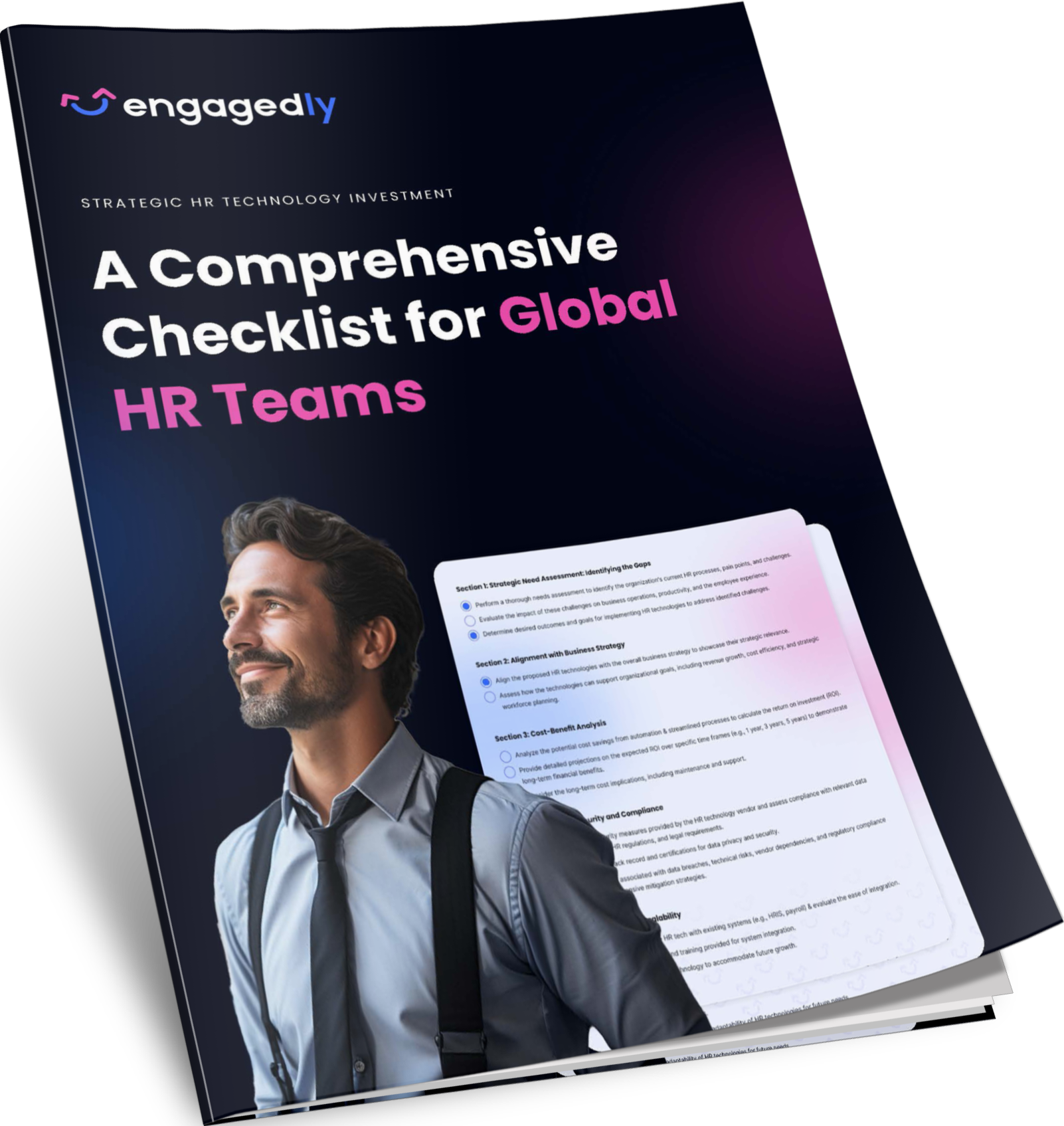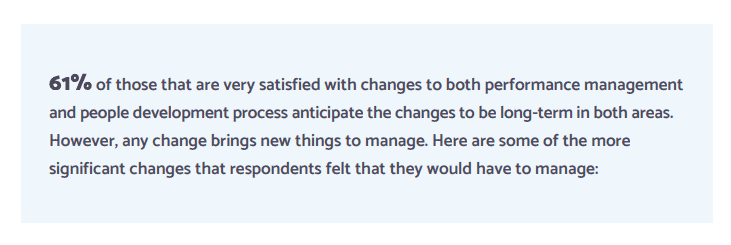The secret of change is to focus all of your energy not on fighting the old, but on building the new. – Socrates
Remote work is not the only aspect of change in the past year. COVID-19 has made sure that everything that was once normal is not so anymore. So we at Engagedly sought to understand these changes (esp. with performance management), how they are impacting us today and whether these changes are permanent.
We surveyed to understand the situation better and bring to you information that will help you improve employee engagement and learning.
In the previous edition, People Development Goes Virtual and More Feedback Focused, we discussed how the pandemic has impacted learning and development, and feedback. In this edition, we will discuss the comprehensive overview.
The Performance Management Survey:
We asked leaders from 5 key industries to report the degree of change for different performance management processes. They were to report whether or not each of the performance management processes was occurring more or less frequently during COVID-19.
They responded on a five-point scale (1= significantly less frequent and 5 = significantly more frequent).
What did we find?
Overall, 20% of respondents were very satisfied with the changes they experienced related to performance management and people development processes. These are the leaders that reported being very satisfied (5, on a 1-5 point likert scale measuring satisfaction) with the changes to performance management and people processes that they experienced due to COVID-19.
Taking a deeper look into those who were very satisfied with the changes provides some additional insights to guide future initiatives.
Also read: Performance Management Gone Virtual and More Progressive
When asked, “What specific process change(s) to people development had the biggest impact on your satisfaction?” There were a few key themes that surfaced:
- Improved training technologies/processes
- More frequent and accessible trainings for employees
- Breadth of training offered
When asked, “What specific process change(s) to performance had the biggest impact on your satisfaction?” Here were a few key themes that surfaced:
- Incentivizing/recognizing employees for good/improved performance and adherence to new policies
- Checking in more frequently with employees about performance and asking them how they were doing personally as well (well-being)
- Optimization of systems and technology
- Transitioning back to the in-person work environment and work schedules Investments in technologies
- Supporting the more flexible work environment and coordinating the work of the team(s)
Also read: Know How to Make Employee Feedback Work
We are still amidst the fog of COVID and its remote work environment when it comes to most of the workplaces in the US. It still remains to be seen if these changes are widespread permanence or if they will be more industry-specific. While we do anticipate that there will be some retrenchment to the old way of managing Performance and Learning & Development but it seems quite likely that we will not go back to pre-February 2020 days.
When looking at the data and insights we can always learn a lot from those that are doing well, or have had a favorable experience. Though our natural tendency is to fix the broken parts, sometimes a fix is as easy as replicating or copying where things are working well. These lessons can come easily from both internal and external sources. All we need to do is be mindful of this fact, and stay curious.
Want to view the detailed report? Click here.
Want to know how Engagedly can help you with implementing continuous feedback? Then request for a live demo




